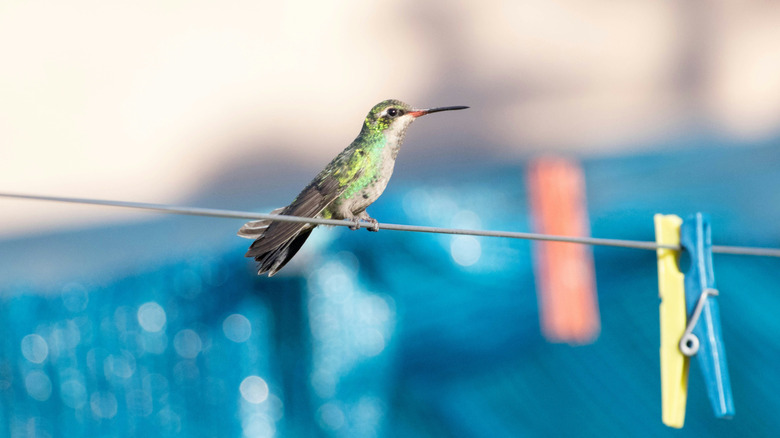The Budget-Friendly DIY To Invite Colorful Birds To Your Yard
Inviting colorful birds to your yard doesn't have to mean that you spend money on bird feeders. Instead, you can try a budget-friendly DIY project that uses items you already have in your home to entice some local birds to join your garden. This clever, low-cost solution became popular on social media, especially on TikTok, where users often share their hacks with one another. This hack uses items that you can find in your home right now if you're already a bird feeder: cardboard, a clothespin, glue, peanut butter, and birdseed.
All you need to do is glue a piece of cardboard to a clothespin, add peanut butter, dip it in birdseed, and clip it to a branch in your garden. This simple design is a great way to attract more songbirds to your yard, filling your garden with feathered friends. As an example, blue jays and cardinals are species that are especially drawn to striped sunflower seeds, while nuthatches and titmice like thistle seeds and black-oiled sunflower seeds, so be sure to check your birdseed mix for those if you're hoping to get these birds into your yard. Of course, you can also consider omitting some seeds if there are certain birds you do not want to see in your yard.
How to make and customise your DIY clothespin bird feeder
To make your DIY clothespin feeder, cut a shape out of thick, sturdy cardboard. Glue the flat side of the clothespin to the back of the cardboard so the clip is facing down and can attach to a branch. Once the glue is dry, spread a layer of peanut butter across the front of the cardboard, then press the peanut butter side into a shallow plate of birdseed. After that, clip the feeder to a tree branch or railing where birds can easily spot it. You could paint the clothespin to match your garden décor, or punch holes in the cardboard and add string for extra stability in windy areas.
Your feeders should also be placed at different heights and positioned near natural cover like shrubs or trees, but not so close that predators can use that cover to ambush feeding birds. Placing feeders about 10 to 15 feet from dense foliage is best. Most birds hit windows as they fly away from a feeder, so place your feeders within nine feet of your windows and apply decals to reduce accidents.
Neglecting to clean your feeders is one of the top mistakes you're making with your bird feeder. If your clothespins are wooden, use hot, soapy water and a bristled brush. During hot weather, periods of heavy use, or during outbreaks of bird diseases like salmonellosis, be sure to clean your bird feeders more often.
